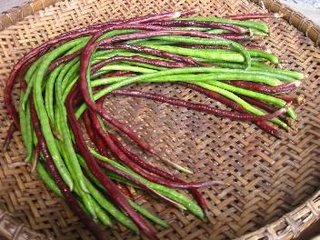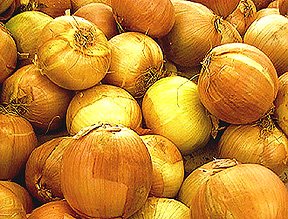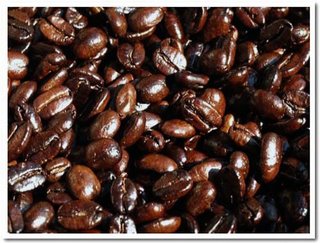"Coffee is the source of happiness and wit," said King Louis XIV who after experiencing coffee's excellent taste and distinctive aroma began to recognize the value of it.
In the Philippines, the coffee industry began in 1740 during the Spanish regime. It is considered one of the high-value crops in the local and foreign markets. Coffee is among the top ten agricultural crops in terms of value.
Coffee registered a total production of 123,934 metric tons valued at P6,818.84 million in 1995. Today, we are exporting to ICO and non-ICO member countries which include Japan, Singapore, West Germany, Netherlands, Malaysia, Muscat Oman, United Arab Emirates, Pakistan and U.S.A. These countries alone account for 97 percent of the total Philippine coffee export.
AGRONOMIC CHARACTERISTICS
Coffee trees require a rich, moist loose, well-drained soil best composed of organic matter, decomposed mold, and disintegrated volcanic rock; a well-distributed rainfall of about 40 to 70 inches annually with peak wet season' high humidity; seven hours of sunshine daily; and plenty of mist and moderate winds.
Coffee trees vary greatly in sizes from dwarf trees to thick-trunked forest giants twenty feet or more in tropic. Generally they are restricted to areas with a medium average annual temperature of 70oF, not lower than 55oF and much above 80oF.
VARIETIES
Arabica is characterized by wavy leaf margin, light green leaf color, thin leaves, pulp and parchment, known as " kapeng tagalog." Yields 500-1,000 kg of clean dry coffee beans per hectare. It could be grown productively in cooler places with an elevation ranging from 1,200 to 1,800 meters above sea level.
Robusta is characterized by large umbrella shaped growth with thinner leaves which have more wavy margins. The berries are borne in heavy cluster with the pulp and parchment. Yields 1,200 kg of clean dry coffee beans per hectare. It could be grown in areas with an elevation ranging from 600 to 1,200 meters above sea level.
Excelsa has wide leaves that are thicker than Robusta but thinner and smoother and more rounded than Liberica with smooth edge. Young leaves are usually shiny with bronze violet color. The berries are borne in heavy cluster, varying in size and usually bigger than Arabica but smaller than Liberica. Pulp and parchment are thicker than the Leberica. Yields 1,000 kg of clean dry coffee bean per hectare. It could be grown from sea level to 600 meters above sea level.
Liberica is locally known as "kapeng barako" because it produces the biggest berry. It is rounded and are borne signly or in small clusters. Has thicker leaves than Excelsa and twice as long as Arabica. The pulp is thick and the parchment is more woody. It also characterized a very strong pharmocopical taste and flavor. It is tolerant to drought and grows in a wider type of soil. Yields 1,000 kg. Of clan dry coffee beans per hectare.
TECHNOLOGY
Seed Preparation
a. Coffee is grown from seeds;
b. Gather seeds from disease and pest-free, high yielding trees;
c. Grow coffee plants in the nursery to produce better seedlings. They nursery be located in the plantation or nearby and accessible to water supply;
Three-fourth kg (i.e. 750 gm) of quality seeds is enough to plant a hectare;
d. A 50% allowance of seeds must be considered for ungerminated seeds, poor seedlings and for replanting;
e. Select viable seeds, stir berries in a bucket of water and remove floaters. Those that sink are the good ones;
f. Remove pulp by hand or pulping machine, then soak beans in water for 24 hours to hasten the removal of mucilage;
g. Wash beans and discard floaters. Air dry in well-ventilated room for least 4 days;
h. Keep dried parchment in cool dry place or mix with charcoal to preserve its viability;
i. Germination bed must be 1 meter wide and of convenient length. To avoid flooding, raise bed 15 cm from ground level;
j. A 1 x 20 m plot can accommodate one ganta of seeds;
k. Sow seeds on shallow rows at ¾ inch deep and cover with fine soil;
l. Water the seedbed regularly but not too wet and partially shade plants from sunlight;
m. This out and prick seedlings (transplant to another seedbed/plastic bags) or when 2-3 pairs of leaves have developed.
Vegetable Propagation
1. Coffee can also be propagated asexually;
2. Clone is used for coffee propagation. It is a part of a plant that is made to reproduce an offspring which carries all the qualities of its parents.
3. Split lengthwise into two halves of a fingersized vertical shoot of about one foot long with 4-6 nodes to produce a clone. Partially cut leaves before splitting;
4. Set modal cutting in germination box 1x2 inches apart and 1 inch deep, then place boxes in germination chamber. Nodal cuttings will produce roots and shoots within 45 days;
5. Prick seedlings into individual plastic bags with soil.
6. Full-grown seedling with 4-6 pairs of leaves could be attained within 6-8 months;
7. Coffee plants raised from nodal cuttings bear fruits 18 months after transplanting, earlier than plants grown from seeds.
Establishment of Plantation
Intensive clearing is necessary for newly opened areas (forest area). Plow and harrow twice open field to check weed growth. Mark places where holes are to be dug. Recommended spacing are as follows:
Variety
ARABICA
Distance in Meters
3 x 1 to 3 x 2 m
2 x 2 x 2 x 3 m double row
Variety
ROBUSTA
Distance in Meters
3 x 1.5 to 3 x 3m
2 x 2 x 2 x 4m double row
Variety
Liberica & Excelsa
Distance in Meters
4 x 5 to 5 x 5.5m
Fertilization
The general recommendation for non-bearing trees in the absence of soil and tissue analysis, is an equal amount of NPK and ammonium sulfate or urea from 250-300 grams per tree per year; and for bearing trees (7 years and above) 1 kilo of 14-14 per tree per year plus ures sidedressed at the rate of 300 grams per tree per year.
Non-bearing trees (1-3 years old) make shallow canal furrow 5 cm deep around the plant; place recommended fertilizer in continuous band and cover with soil.
Bearing trees (7 years old)-localized placement is recommended for sloping land. Apply fertilizer in holes or trenches made around trees between outside of the crown and onehalf meter from the base. Broadcast fertilizer 0.5m for level land.
Pruning
Removal of unnecessary branches (excess, old and dead branches) and undesirable sprouts. Pruning regulates the height of the plants, facilitates harvesting and other field operations, promotes better aeration and light penetration. This is best done before general flowering or after harvest.
Common Pests and Control
Coffee Berry Borer most destructive and hardest to control. Attacks all stages of fruit after berries become mungo-size. Infested young berries turn from normal green color to yellow orange and shortly afterwards, fruit falls prematurely. Presence of empty or partially filled fruits underneath tree is a sure sign of infestation.
Coffee Leaf folder larvae feed on leaves and sometime attack flowers and fruits. Adult is a small moth with light brown forewings. The eggs are laid in clusters on leaves. Development period is 5-6 weeks.
Control: Collect and destroy infested berries before and after harvest. Pick up all berries, including those that fall on the ground, to eliminate breeding and feeding sites of insects. Spray Endosulfan at recommended rates at 14 to 21 days interval or 4 to 5 times spraying during fruiting season. The first spraying should be done when the berries attain the size of a mungbean seed.
Common Diseases and Control
Coffee Rust the most prevalent and destructive disease of coffee, Small, yellowish spots appear on lower surface of leaves; as spots enlarge, powdery yellow to orange spores are produced. Affected leaves drop and tree may die. To prevent, use resistant strains, spray susceptible varieties with copper fungicides at 2-3 week intervals at start of heavy rains.
Die-Back is characterized by drying of branches and twigs from to and downwards. Appearance of spots with concentric lines on both surfaces of seedlings, twigs, and berries. If severe affected, leaves fall, twig and branches dry. To control, maintain vigor of trees by fertilizing with the right kind and amount of nutrients at proper time; regulate plant growth to prevent overbearing by pruning and/or shade.
HARVESTING
Maturity of berries is 6 to 8 months after blooming but varies on the environmental factors from region to region. In Mindanao, Arabica flower in January to May and berries are harvested in August to December. In Luzon, coffee trees bloom just after the first heavy rains in May and June, Arabica and Robusta berries are harvested in late December to March; Excelsa and Liberica later.
Individually pick berries (i.e priming) to avoid presence of pedicels. For quality beans, harvest only matured berries (i.e. berries turn red from its ground color.)
Transplanting
Coffee seedlings are ready for transplant when 6 pairs of leaves have been fully developed and with no lateral branches yet. Dig holes and transplant in the field at the start of the rainy season. This will give sufficient time for young plants to establish roots before dry season sets in. Dig hole wide and deep enough to accommodate ball of earth with roots intact. Return topsoil in the hole, then add tablespoons phosporous fertilizer, and mix thoroughly.
Source:www.da.gov.ph;photo from
http://www.satoyama-net.com





